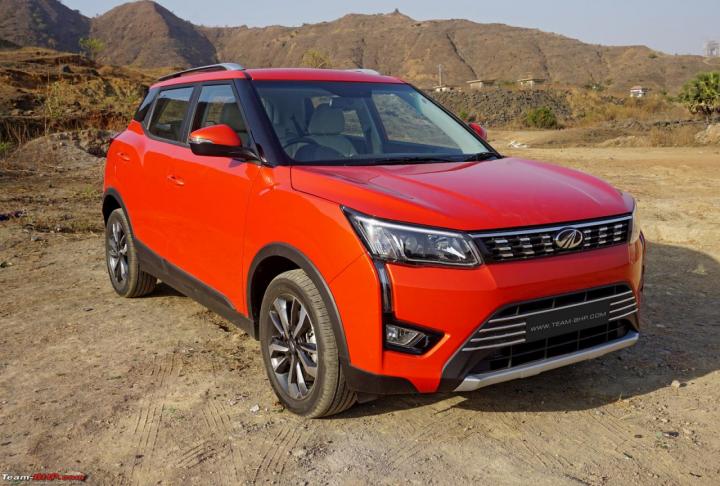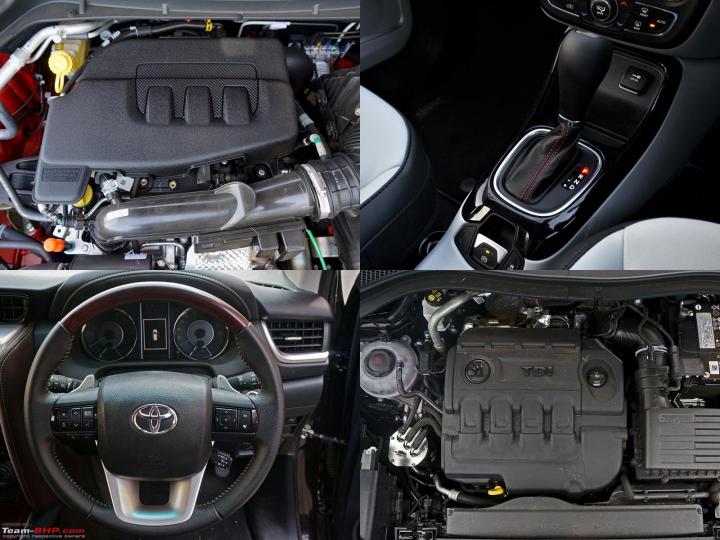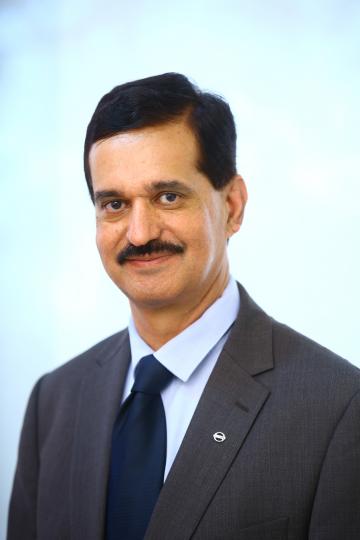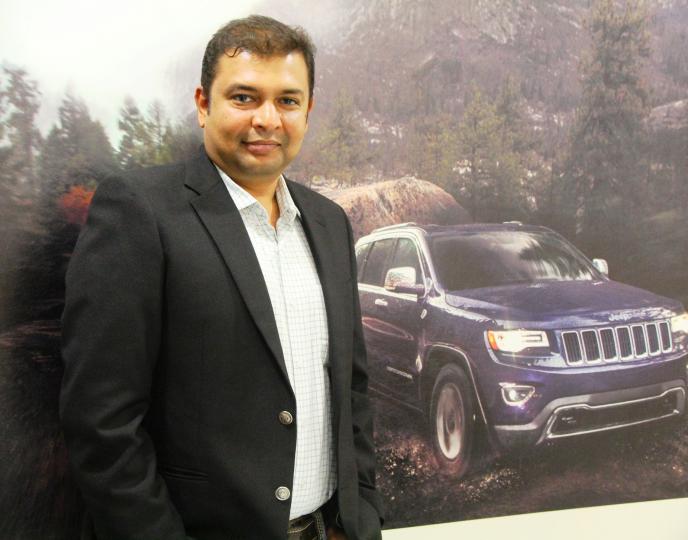News
Agile management in the Indian auto industry
Agile management is the application of the principles of agile software development to various management processes, particularly project management.
BHPian govindremesh recently shared this with other enthusiasts.
"Agile management is the application of the principles of agile software development to various management processes, particularly project management."
A lot of you in the IT industry might be smiling wide or laughing out loud. Those in the business side of organizations might have definitely heard about this term. AGILE - a word that is horribly misused in management and sometimes in software development.
Originating as a methodology of software development to ensure that customer value is maximized, product or solution stays relevant to the business needs and thus minimizing waste by reducing unnecessary development hours on features that didn't meet client expectations or became obsolete as the development progressed, this project management methodology caught the fancy of the world and is now being applied in almost every imaginable function of the commercial world. "We need to be agile" is a sentence that is spoken with a lot of pride and enthusiasm by management folks (with very few understanding what it means). Agile transformation coaches, Agile transformation programs and Agile what not.
Taking a break from my rant and coming to the point. Team-BHP has been a wonderful source of information. Using the same source, I observed a pattern that I would like to discuss with the members here. No prizes for guessing the question:
Is the Indian automobile industry embracing Agile management?
We've seen it in a few threads: Features getting deleted, variants being shuffled, Colours being introduced in the product life cycle, some logical and some illogical variant combination being introduced and taken out silently form in market. Related Thread.
If my understanding is correct, traditionally car makers would launch a car, follow it up with a face-lift in 2-3 year's time (where there will be feature changes, which also will be widely advertised) followed by either another face lift or a whole new model. This was true for most car makers unless there were safety/reliability concerns that would necessitate a pre-facelift change to the features or engineering of the car.
However in these days, we see that manufacturers are constantly playing with features, engineering and price of the products. Don't take my word for it though, do refer those threads!
- Yet another Polo variant
- Tata deletes features!
- Tata Discontinues Nexon variants
- Hyundai deletes features and adds variants to i10 lineup
- Ford Deletes features on EcoSport.
- Mahindra deletes features and raises prices of XUV 300.
- Volvo deletes safety features.
The interesting part is: in the software industry, the end consumer will benefit from the updates and its a win-win for the manufacturer and the customer. With cars that's not the case as the consumer is mostly on the losing side. Ask Volkswagen to swap out the MPI engine of your Polo for a TSI engine at your own expense? Good luck with that! However, a rare exception was Maruti that refunded money to early S-Cross buyers.
It's a different story with electric vehicles though- companies will definitely be agile there. Maybe that's why the likes of Tesla and VW are focusing on reducing the number of physical buttons in the cabin and moving controls to the central touchscreen. It's super easy to add/remove/modify features that are controlled via software! The battery and motor management software can also be updated and considering the fundamentals of supply chain, you could possibly make your long range Tesla into a performance edition if you know how to tinker with the car. It also allows companies to beat the competition, get the first mover advantage and then fix issues in the background. Nobody will then complain about missing ICE/Climate control buttons on the dashboard- There won't be any!
While frequent feature/engineering/price changes might benefit the automaker, for now (at least in India) it leaves the consumer with a bad taste. However, not being agile might just kill the business (Nokia/Kodak anyone?). Maybe that's why they test the waters these days before launching a specific engine + transmission combination or a higher variant? The Indian automobile market is an enigma that many global auto majors are yet to crack, so testing the water becomes so much important.
Not everyone is agile though. I've not heard the likes of Maruti/Honda make frequent changes to their line-up, but I could be wrong.
These are my thoughts, but since I'm not an automobile industry expert, I'm very curious to know what fellow BHPians here think?
Here's what BHPian Rajeevraj had to say on the matter:
As you mentioned in the first para, agile is a much misused term and is now taken as a mantra to solve all of the problems a company faces. The idea seems to be, if something does not work, let's throw agile at it. Whole companies are attempting to do this without any consideration of the domain and requirements of the domain.
I had been in this bandwagon sometime back. I stepped away when the focus became only on 'doing agile' and not 'being agile'.
My current approach is simple. You need to 'be agile' and you cannot get there by 'doing agile'. You need to understand what blocks you from being agile and take those iterative and incremental steps to get there. If you peel away all the agile jargon, at the heart of it, it is pretty simple- how do you continuously improve.
In the context of the thread, I would again hate to use the agile word. Manufacturers have realized that they need a way to be responsive and some of them have established a way to do that. The reasons for doing it may be multi fold, some of it may disappoint existing owners, some maybe the new buyers, some maybe for profitability. So who benefits from a manufacturer being able to be agile is debatable, but in my view it is good that they are able to do it.
Edit: Having said all of that, one thing that I forgot to mention was the 'Lean Methodology' pioneered by Toyota starting in the mid-20th century itself. If you read the definition it would be very familiar. I assume most manufacturers would still be doing some form of this.
Here's what BHPian V.Narayan had to say on the matter:
In the 150 years since the industrial revolution, in the 110 years since the invention of the conveyor belt, in the 80 years since the introduction of Work Study, in the 70 odd years since the introduction of PERT/CPM and work flows, in the 55 years since the introduction of Lean, in the 30 years since the introduction of six sigma.... do you want me to go on.....humankind has constantly made an endeavour to fine tuning working methods, to improve methods of organizing factors of production, to refine design methodologies, to manage projects better & sharper and so on.
Every now and then along comes a new term with old wine in a new bottle and gets positioned as the panacea for all ills. For the current era it is AGILE. Just before this it was Six Sigma amongst others.
Agile as a concept and as a method of working has been practiced by Armed Forces of the world for centuries. Every commander of a ship or a battalion knows its nuts and bolts except they don't call it Agile. It is nothing but being resourceful, being quick, not waiting for 100% perfection and attacking the enemy first. The concept of Agile has been used to build the de Havilland Mosquito fighter-bomber of World War 2 in 13 months from concept formulation to the prototype flying and it was the most versatile warplane of the War on all sides. {From the world of aviation i.e. my line I could rattle off two dozen examples from the 1930s to the 1990s.}
All these concepts and methodologies have been around for decades and used under different names. They were used and indeed some were developed from the Apollo moon landings, the US Navy nuclear powered ballistic missile submarines, the D-Day landings in 1944, to our own Pokhran-I explosion, to the national elections conducted in India every 5 years, to so many other human achievements in engineering and organization. Why even the Finance bill of 1991-92 that master minded and ushered in the economic opening of India was put together in less than 60 days. If that isn't agile then what is?
Unfortunately second grade IT managers at the middle and senior levels are beating the Agile mantra as a cure for all ills. In the process the medicine becomes the root cause of more illness. Some very large IT companies in both India & USA have embraced this and are ramming it down the throats of their employees and vendors. I am glad I am not in the IT industry as I see it as a dance of donkeys and the juniors bear the burden. As someone very closely associated with three large technology companies I at least have made it very clear that we are not going to go down the AGILE rabbit hole and make a bureaucracy out of what was meant to be a simple age old method of being nimble and getting something 80% right out there on time.
In my almost 4 decades of work life I cannot even count the number of times a cross-functional, multi-disciplinary team had to be put together at short notice to address a problem or an opportunity with the key leaders empowered to take big decisions on the spot. And the job had to be done in 72 hours flat. To all lovers of AGILE, Roman legions were doing this 2000+ years ago for heaven's sake.
Coming to the automobile industry - in any product engineering endeavour where deep compliance and human lives are at stake you do things with diligence, planning, and deep quality check at the design stage. Products such as medical equipment, pharmaceuticals, aircraft, cars, ships, electrical machinery etc., fall in this bucket. You cannot take the risk here of gimmicky fads. My personal belief AGILE as it is understood today has limited application in the auto industry except in areas like external facia or some look & feel of the cabin or colour combinations. I wonder if Boeing was practising AGILE in the design of the 737MAX!!!
My deepest sympathies to all readers who in their jobs have borne the cross of agile.
Here's what BHPian 84.monsoon had to say on the matter:
I think the concept of Agility as it is used in Software Development cannot be applied in the Auto industry very easily. One of the cardinal principles of Agile software is to deliver a Minimum Viable Product (MVP) as quickly as possible, and then keep improving it in subsequent speedy releases, until you have a fully functional product. Being a highly regulated industry where the safety of people inside and outside the car is paramount, and the possibility of getting sued, if the specs promised are not delivered exactly, the development of a car follows more of a "waterfall" process. The key outcomes are determined upfront, a lot of engineering is then done to design and develop a product that meets these outcomes. It is then tested extensively over lakhs of kilometres and defects fixed. Sounds like very traditional "waterfall" process to me!
However, there is possibility for something like a "Agile Dressing" in terms of visual, comfort and convenience features like the infotainment system, sunroof, charging points etc. that can be added or tweaked after launch. The best illustration of how this concept was applied (although perhaps not intentionally) is the Tata Harrier. Initially it was delivered as an 80% finished product in early 2018, well before the competitors like MG Hector could arrive on the scene. There were ugly panel gaps, the charging ports were all but inaccessible, the steering was too light, the interior fit and finish was rough and uneven, the knee was fouling with the Dash etc. Tata then took all the customer feedback sincerely, and worked on these items one by one in a sincere way, improving the Harrier quite a bit every few months. The 2019 model year Harrier was better in many respects and it got even better in 2020. They even added mechanical changes like the engine state of tune, automatic etc. in 2020, which is like beginning a new Agile Cycle.
However, there is one big difference in this journey, as compared to Agile Software - in the case of software, the user gets to experience the new features as they are added, however a car buyer is stuck with what he/she buys. It is just poor luck if they got an early model Harrier, in this case. I am not speaking of next generation software-driven electric cars like Tesla etc. which may be able to offer many of the added content and features to existing customers, however even there, physical items like seating, paint quality, fit and finish etc. cannot be delivered as updates.
Check out BHPian comments for more insights and information.
News
Rumour: Mahavir Group takes over Benelli's India operations
Benelli India may have parted ways with DSK Motowheels and moved under a new management. According to a media report, Hyderabad-based Mahavir Group has taken over Benelli's India operations as its former owners are faced with bankruptcy.
Benelli, which is a part of the Qianjiang Group, entered India in 2014 after announcing a partnership with DSK Motowheels. The brand currently has 25 dealerships across India, including one in Hyderabad, which is owned by the Mahavir Group.
The report suggests that Mahavir Group will handle sales, service and spares for existing and new Benelli customers in India. The company is also planning to setup a new plant near Hyderabad.
Apart from their association with Benelli, the Mahavir Group also has dealerships of Mercedes-Benz, Skoda, Isuzu and Indian Motorcycles in Hyderbad and Vijayawada.
Source: Zigwheels
- Tags:
- Indian
- Benelli
- DSK-Benelli
- Management
News
Mercedes India gets a new boss, Martin Schwenk
Martin Schwenk has been appointed as the new Managing Director and CEO of Mercedes-Benz India. He will take charge of the India operations from November 1, 2018. Schwenk replaces Roland Folger, who will head Mercedes-Benz Thailand.
Martin Schwenk has an Engineering degree from the University of Stuttgart. He joined Daimler in 1992, through the Mercedes-Benz Training Program. Since 2015, he has been the CFO at Beijing Mercedes-Benz Sales Service Co. Ltd. (BMBS).
In the past, Schwenk has been the CFO of Mercedes-Benz U.S. International, Inc. and Mercedes-Benz G GmbH (Graz, Austria). He has also served as the Head of Finance & Controlling at Mercedes-Benz South Africa as well as at Daimler AG.
News
Gurpratap Boparai appointed Managing Director of Skoda India
Skoda Auto India has appointed Gurpratap Boparai as its new Managing Director. He will take over the role on April 2, 2018 and will report directly to Skoda CEO Bernhard Maier.
The 48-year old Gurpratap Boparai has many years of experience in the automobile industry. From 1991 to 1994, he worked with Tata Motors as a Senior Engineer. In 1995, he moved to Tata Cummins and held the post of Business Unit Leader. From 2000 to 2005, he headed the assembly unit at IVECO. He went on to join Fiat India as Vice President, Head of Powetrain Division in June 2007. Since 2012, he was holding the position of CEO of Fiat India.
Gurpratap Boparai replaces Sudhir Rao who had resigned from the post of Managing Director of Skoda Auto India in May 2017.
- Tags:
- Indian
- Management
News
Hardeep Singh Brar to be appointed as VW India Sales Head
A media report suggests that Hardeep Singh Brar is set to be appointed as the head of sales at Volkswagen India. He will take over from Steffen Knapp who joined as the brand director in June and had also been handling responsibilities as the interim sales head.
Mr. Brar was the head of sales at General Motors India before the company decided to shut shop. According to the report, his contract won't be over until March 31, 2018 however he was reportedly offered the option to exit the company by September 30, 2017.
Before joining GM, Mr. Brar was associated with Volkswagen India from 2012-15. During this period, he was the head of network development. In the past, he has worked with Maruti Suzuki, initially as the deputy sales manager and was later appointed as the head of corporate sales and rural marketing.
Source: Economic Times
News
Nissan India announces senior management reshuffle
Nissan India has announced a reshuffle of its senior management team with Arun Malhotra, who currently holds the post of Managing Director at Nissan Motor India Pvt. Ltd. (NMIPL) taking over as Corporate Advisor.
He will oversee the brand's network expansion and future growth goals. He will report to Peyman Kargar, Chairman of Nissan's Africa, Middle East and India (AMI) region. Mr. Kargar is also the acting president of Nissan India Operations before Thomas Kuehl takes over that portfolio.
Besides that, the current vice president of marketing and Datsun Business Unit, NMIPL - Jerome Saigot will be handling sales and marketing for both Nissan and Datsun brands. Mr. Saigot will be reporting to Thomas Kuehl and will be based at NMIPL's Gurgaon office.
Furthermore, Peter Clissold, who is General Manager, Marketing for the AMI region will be taking over the role of Vice President, Marketing at Nissan Motor India Pvt. Ltd. and will oversee both Nissan and Datsun brands. Mr. Clissold will also be based in Gurgaon and will report to Jerome Saigot. All the administrative changes will be effective from October 1, 2017.
- Tags:
- Indian
- Management
News
Skoda India's Managing Director - Sudhir Rao quits
Sudhir Rao, Skoda Auto India's Managing Director has quit from his position with the Czech automaker. He is likely to be replaced by another Indian executive. However, Rao will continue to serve his term till June 30, 2017.
Sudhir Rao's resignation comes over five years and three months after he first joined the carmaker. He was made the MD of Skoda Auto in 2012. The MD position at Skoda India was vacant from 2008-12. Rao was known for taking tough decisions in order to make Skoda's Indian arm profitable. He is said to be the man behind the company's decision to discontinue the Fabia hatchback, which resulted in drop in sales volumes, but also reduced operating losses of the carmaker. Under his leadership, Skoda trimmed its workforce by over 25% in order to achieve a leaner organization structure.
Prior to his term with Skoda, Rao had served as Deputy MD and Chief Operating Officer (COO) at Renault India, where he is considered to have played a key role in Renault's separation from the Mahindra joint venture. He has also worked with General Motors and Avtec Engines, which is a CK Birla Group company.
No reasons were mentioned behind Rao's exit from Skoda Auto India. However, he indicated that he will now be looking for new opportunities outside the automobile industry.
Source: ET Auto
News
Mahindra - new leadership team announced
Mahindra has restructured its businesses with the introduction of a new vertical - the agriculture sector. As a result, the company will now deal in three different and dedicated sectors - automotive, farm equipment and agriculture.
The group has also announced new heads for the three sectors. Mr. Rajan Wadhera has been named the president of Mahindra's automotive sector. He will take charge from the current president and CEO - Mr. Pravin Shah. Mr. Shah is scheduled to retire from his role on March 31, 2017. In addition to its passenger car division, the automotive sector will also include Mahindra's trucks, buses and construction equipment businesses.
Mr. Rajesh Jejurikar has been re-designated as the President of the farm equipment sector, while Mr. Ashok Sharma will be heading the agriculture sector. All the three presidents will be reporting to Dr. Pawan Goenka. The aforementioned organizational changes will be applicable from April 1, 2017.
Dr. Pawan Goenka was recently named the Managing Director of Mahindra, while Mr. Anand Mahindra was named the Executive Chairman of the company.
- Tags:
- Indian
- Management
News
Management changes at Fiat Chrysler Automobiles India
Fiat Chrysler Automobiles India (FCA) has announced the appointments of Rahul Pansare as the new Head of Marketing and Sushant Balsekar as the new Head of PR & Corporate Communications of the company.
Rahul Pansare is a Mechanical Engineer and management post graduate. He has 15 years of experience in sales and marketing across domains such as FMCG, entertainment and automobiles. His association with Fiat goes back to 1999, when he started working at Fiat India as an engineer. Prior to joining FCA he was the Head of Communications in Volkswagen Group Sales India.
Sushant Balsekar is an Automobile Engineer with 16 years of work experience. He has worked in various fields such as automotive journalism, automotive PR consulting, corporate, product, brand and strategic communications as well as marketing communications. Prior to joining FCA he was a communications consultant to General Motors India. He has previously worked with Nissan India, Ford India and Ford Asia Pacific and Africa in a variety of communication roles. Sushant will be taking charge from Marius D'Lima, who will soon retire.
These appointments come just as FCA gears up for the launch of Jeep in India and planning for new Fiat products.
- Tags:
- Indian
- Management
News
Frank Schloeder appointed as acting President of BMW India
Frank Schloeder (41), currently Director Marketing at BMW India, has been appointed as acting President of BMW Group India. He is scheduled to take up this position from May 1, 2016.
Born in Trier, Germany on November 14, 1974, Schloeder completed International Studies in Business Administration from the University of Munster, Germany and Montpellier Business School, France. He began his career with BMW in France in 1997.
Schloeder replaces Philipp von Sahr (58), current President of BMW India, who will move to BMW Niederlassung in Berlin, Germany.
- Tags:
- Indian
- Management
Pages



























